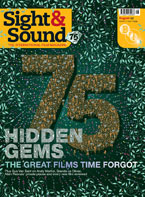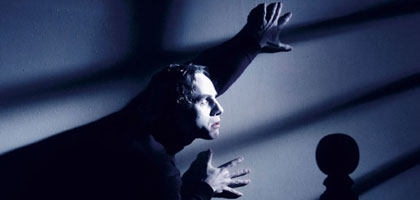
Nozone: A case for treatment
DVD Review: Psychopathia Sexualis

Bret Wood's film of a German medical text should have been a disaster. Instead, says, Tim Lucas, it's a triumph
Bret Wood; USA 2006; Kino on Video/Region 0; Aspect Ratio 1.85:1; Features: deleted scenes, trailers, two short films by Wood, crew and cast interviews, historical data, stills gallery, screenplay excerpts
Atlanta-based film historian and film-maker Bret Wood has always been drawn to bizarre subjects. His published work includes an editorialised collection of Dwain Esper screenplays, and his filmography consists of two documentaries, one a disturbing history of highway safety films (Hell's Highway), the other an overview of horror in the silent cinema (Kingdom of Shadows). For his first dramatic feature, Wood presented himself not only with the usual challenges, but also with a minefield of opportunities for disaster: he decided to shoot a turn-of-the-century European narrative in less than 30 days on standard 24P digital video, using existing locations and Atlanta stage talent. His script? An adaptation of the decidedly non-dramatic Psychopathia Sexualis, a notorious German medical text detailing case studies of supposed sexual deviancy.
Published in 1886, the first edition of Dr Richard von Krafft-Ebing's Psychopathia Sexualis consisted of only 45 studies; but the 12th edition of 1902 embodied the concept of 'out of the closet' as it swelled to 238 examinations of fetishism, necrophilia, vampirism, asexuality and - a particularly worrisome 'deviation' of the time - homosexuality, which Krafft-Ebing believed could be 'cured' through redirective hypnosis.
Against all odds - including the city of Atlanta's abrupt withdrawal of a key filming location, requiring the miraculous provision of a soundstage and built sets - Bret Wood has not only succeeded with his Psychopathia Sexualis, but triumphed. A sinuous interweaving of four case studies and other interludes, this remarkably mature and beautifully photographed debut asserts its own voice (familiar from Wood's documentaries), while balancing fresh cinematic techniques with silent influences and devices (such as iris shots), and Krafft-Ebing's clinical texts with much-needed warmth and empathy. Unlike the pastiche-like ways in which silent imagery is manifest in, for example, Guy Maddin's fine work, Wood's absorption of such techniques evinces a broader range of familiarity and more organic expression. He rarely gives us shots that 'quote' or recreate the great silent masters; instead, he and DP David Bruckner present images those masters might have shot, had they somehow assimilated the last 80 years of cinematography.
The main studies in Wood's film encompass a repressed young man (Daniel May), dominated by his mother, who takes to sucking blood from the pricked fingers of female servants; a gay man (Daniel Pettrow) who submits to Krafft-Ebing's (Ted Manson) hypnosis cure; a masochist (Brad Brooks) who can enjoy sex only through ritual abuse at the spiked heels of two prostitutes and a confederate in costume; and a self-loathing lesbian (Lisa Paulsen) struggling to keep her emotions bottled up while acting as tutor to a young woman (Veronika Duerr) increasingly insistent on returning her love. The masochist story is not as fleshed out as the others and feels fairly dispensable, but the vampire study is rich and unusual, full of haunting images, and could have made a strong, genre-advancing feature in its own right. Another highlight is a rather extreme story of necrophilia, unthinkable as a straightforward dramatisation, which Wood cleverly presents in the form of a shadowplay (delightfully designed and performed by Jason Hines), catapulting Psychopathia Sexualis into the realm of The Adventures of Prince Achmed. If this sequence is the film's tour de force, the aces up its sleeve are the exquisitely nuanced performance by Paulsen and a dramatic closing indictment of the medical establishment for the political motivations underlying these sometimes regrettable classifications of human behaviour.
Though some of the subject-matter is extreme, it's filmed with taste and restraint; no viewer will be more upset by what they see than by what they imagine. Wood's loving attendance to these miserable lives leaves us to ponder the question of how much else of urgent value humankind has yet to discover about itself.
